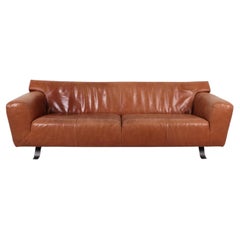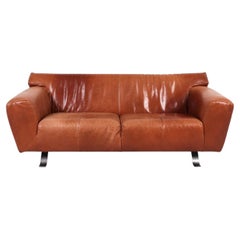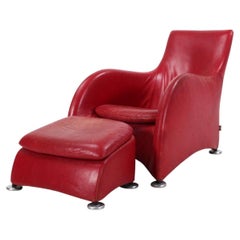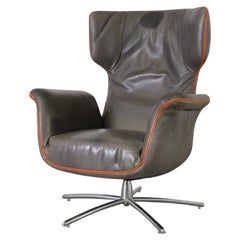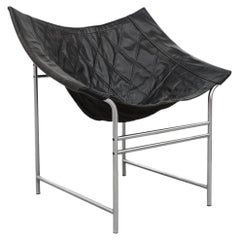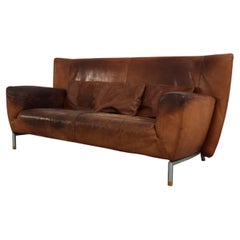Gerard Van Den Berg
Modern Dutch design owes a great deal to Gerard van den Berg. While the Netherlands has a rich furniture-making tradition, it took a maverick like Van den Berg to bring it into a new era. His innovative armchairs, lounge chairs and sofas offer a reinterpretation of mid-century modern Dutch designs and have found wide appeal among international customers.
Van den Berg was born in 1947 to a family of designers. His father owned a furniture company in Hellevoetsluis where Van den Berg worked as an apprentice and then designer until he and his brother, Ton, founded their own workshop, in 1974. That company, named Montis, produced mostly upholstered seating for homes and businesses.
At Montis, Van den Berg challenged traditional Dutch furniture forms. Rather than starting with the piece's frame, which he felt was restrictive, he focused on the silhouette. This inspired Van den Berg to create slim and elegant furniture, often featuring angular metal legs and leather upholstery. In 1983, he pioneered the "jacket technique," consisting of a zipped leather cover around a metal frame. Several iconic Montis seats use this technique, including the Chaplin chair, the Butterfly lounge chair and the Rocky sofa.
In 1989, Van den Berg launched his own design studio and began designing for companies like Wittmann, Molteni and Perobell. He left Montis in 1990 to cofound a new company, called Label, with Ton the following year. Label furniture captures the essence of no-nonsense Dutch design. It is comfortable and relaxed, featuring simple forms that are pleasing to the eye.
Van den Berg's irreplaceable contributions to furniture design have garnered multiple awards over the years. Some of the most notable include the Kho Liang Prize, the Mobilia Innovation Award and the Prize for Interior Architecture.
Today, Van den Berg's son Jasper and Ton's daughter, Marieke, manage Label. Van den Berg's other son, Ivo, is also a designer at the company.
On 1stDibs, find Gerard van den Berg seating, case pieces and more.
| Average Sold Price |
| $3,935 |
| Styles |
| Materials |
| Related Creators |
21st Century and Contemporary Dutch Scandinavian Modern Gerard Van Den Berg
Chrome
1980s Dutch Vintage Gerard Van Den Berg
Leather
21st Century and Contemporary Dutch Scandinavian Modern Gerard Van Den Berg
Chrome
1980s Danish Modern Vintage Gerard Van Den Berg
Aluminum
2010s Dutch Modern Gerard Van Den Berg
Chrome
Late 20th Century Dutch Post-Modern Gerard Van Den Berg
Leather
1980s Dutch Mid-Century Modern Vintage Gerard Van Den Berg
Chrome
1990s Italian Mid-Century Modern Gerard Van Den Berg
Leather
Gerard Van Den Berg Sale Prices
| Sold Date | Sold Price | Category | Material | Creation Year | |||||||||||||||||||||||||||||||
|
| $3,935 |
Average sold price of items in the past 12 months |
| $911-$8,573 |
| Sold price range of items in the past 12 months |
